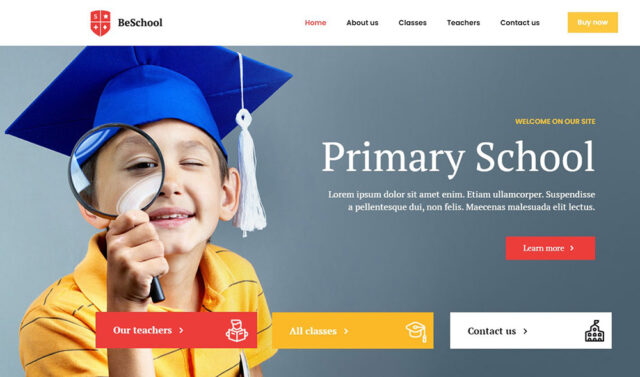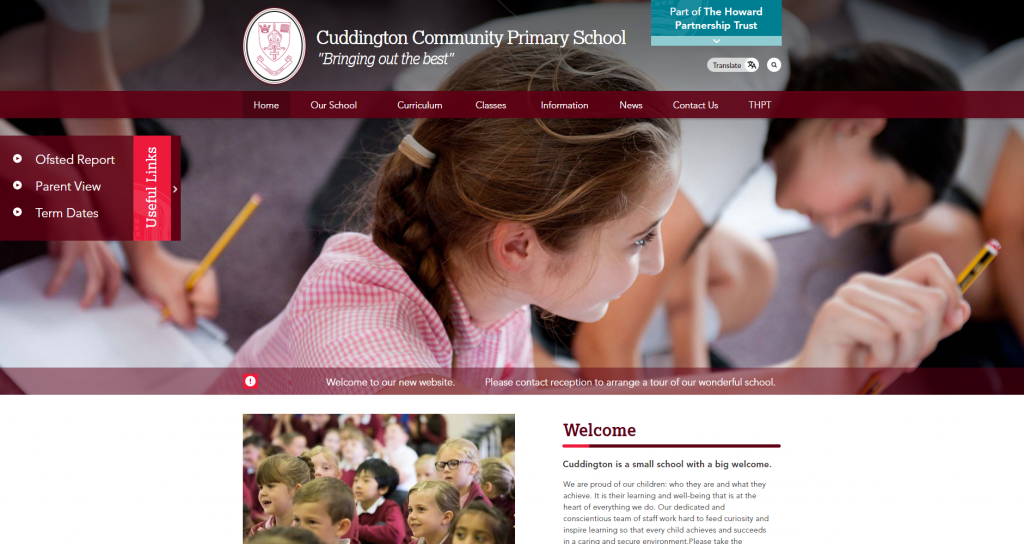In the digital age, school websites serve as vital resources for students, parents, and faculty. A well-designed website can enhance communication, streamline access to information, and foster a sense of community within the school. Here are some essential tips for designing a student-friendly interface on school websites.

1. Prioritize User-Centered Design
Understanding the needs of your primary users—students—should be the foundation of your website design.
- User Research: Conduct surveys or focus groups to gather insights about students’ preferences and challenges when using the website.
- Personas: Create user personas representing different student demographics (e.g., high schoolers, parents, international students) to guide design decisions.
2. Simplify Navigation
Clear and intuitive navigation is key to ensuring students can quickly find the information they need.
- Logical Structure: Organize content in a logical hierarchy, with primary categories such as “Academics,” “Student Life,” “Admissions,” and “Resources.”
- Mega Menus: Use mega menus for easy access to subcategories, reducing the number of clicks needed to reach desired content.
- Search Functionality: Include a prominent search bar to help users quickly locate specific information or resources.
3. Use Responsive Design
With an increasing number of students accessing school websites on mobile devices, a responsive design is crucial.
- Fluid Grids: Use a grid system that adapts to different screen sizes, ensuring the website looks great on desktops, tablets, and smartphones.
- Mobile-Friendly Features: Prioritize touch-friendly elements, such as larger buttons and easy-to-read text.
4. Emphasize Accessibility
Designing with accessibility in mind ensures all students can effectively use the website.
- Color Contrast: Use high-contrast colors for text and backgrounds to enhance readability for students with visual impairments.
- Alt Text for Images: Provide descriptive alt text for images to assist visually impaired users using screen readers.
- Keyboard Navigation: Ensure that all interactive elements can be accessed using a keyboard, making the website usable for individuals with mobility challenges.
5. Enhance Content Engagement
Engaging content keeps students interested and encourages them to explore the site further.
- Multimedia Integration: Incorporate videos, infographics, and interactive elements to make content more engaging.
- Student Testimonials: Feature testimonials or stories from current students to provide relatable insights and encourage prospective students.
- Event Calendars: Implement interactive calendars showcasing school events, deadlines, and extracurricular activities.
6. Streamline Important Information
Critical information, such as announcements and resources, should be easy to find.
- Prominent Alerts: Use banner alerts or pop-ups for important announcements (e.g., school closures, events).
- Quick Links: Create a section for quick links to frequently accessed resources, like the school calendar, lunch menus, and academic resources.
7. Foster Community Interaction
Encouraging interaction within the school community can enhance the overall user experience.
- Forums or Message Boards: Implement platforms where students can discuss topics, ask questions, and connect with peers.
- Social Media Integration: Incorporate social media feeds to showcase school activities and engage students in real-time discussions.
8. Regularly Update Content
Keeping content fresh and relevant is essential for maintaining student engagement.
- Content Management System (CMS): Use an easy-to-manage CMS that allows faculty and staff to update content regularly without requiring technical expertise.
- Feedback Mechanism: Provide an option for students to give feedback on website usability and content, which can guide future updates.
9. Test and Iterate
The design process doesn’t end after the launch. Continuous testing and iteration are vital.
- Usability Testing: Conduct regular usability tests with actual students to identify pain points and gather feedback for improvements.
- Analytics Monitoring: Utilize website analytics to track user behavior and identify areas needing enhancement or adjustment.
Conclusion
Designing a student-friendly interface on school websites requires a focus on user needs, accessibility, and engaging content. By prioritizing clear navigation, responsive design, and community interaction, schools can create websites that not only serve as essential resources but also foster a strong sense of belonging among students. Implement these tips, and watch your school’s online presence thrive!


No responses yet